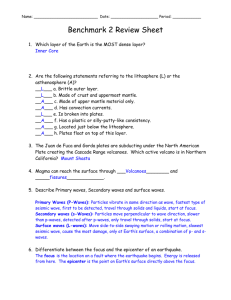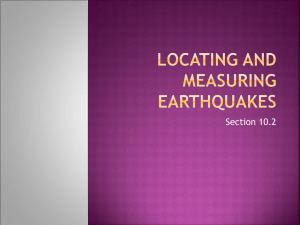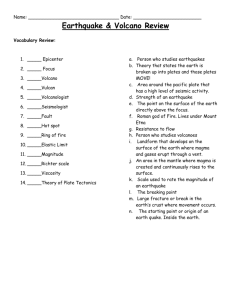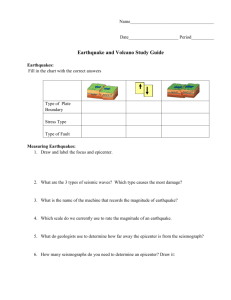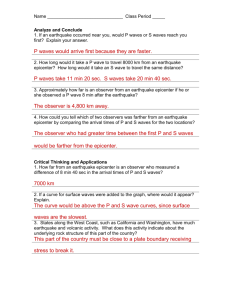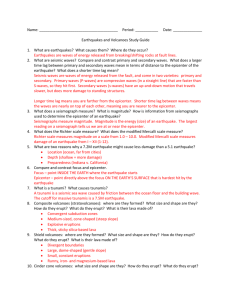Earthquake and Volcano Study Guide What is the study of
advertisement
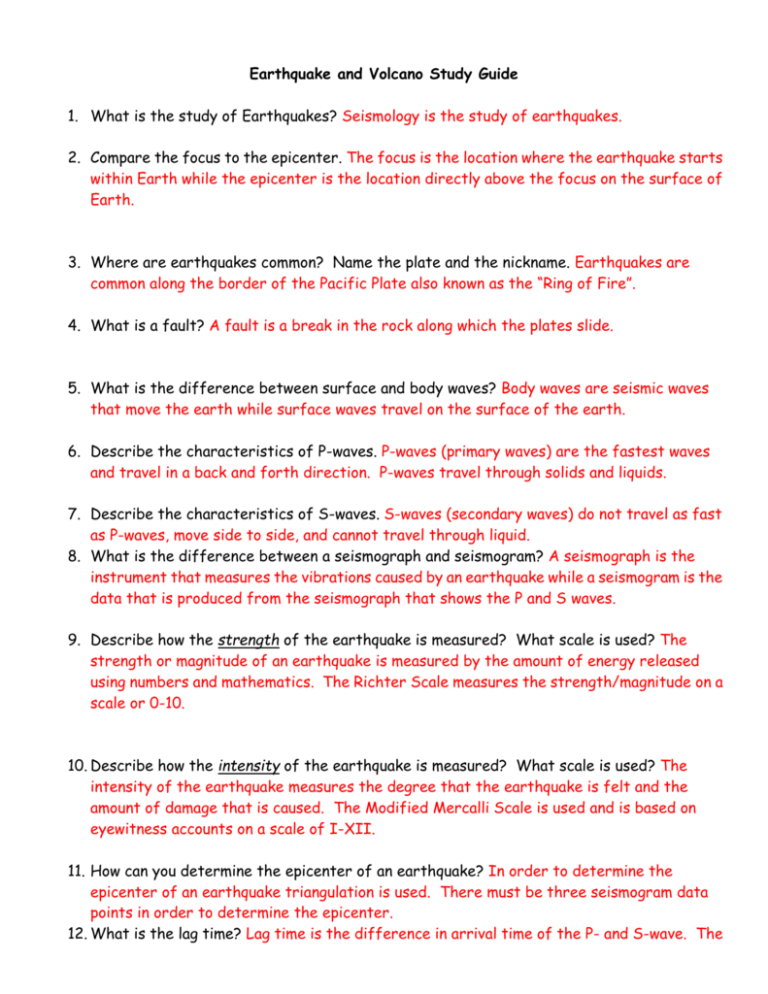
Earthquake and Volcano Study Guide 1. What is the study of Earthquakes? Seismology is the study of earthquakes. 2. Compare the focus to the epicenter. The focus is the location where the earthquake starts within Earth while the epicenter is the location directly above the focus on the surface of Earth. 3. Where are earthquakes common? Name the plate and the nickname. Earthquakes are common along the border of the Pacific Plate also known as the “Ring of Fire”. 4. What is a fault? A fault is a break in the rock along which the plates slide. 5. What is the difference between surface and body waves? Body waves are seismic waves that move the earth while surface waves travel on the surface of the earth. 6. Describe the characteristics of P-waves. P-waves (primary waves) are the fastest waves and travel in a back and forth direction. P-waves travel through solids and liquids. 7. Describe the characteristics of S-waves. S-waves (secondary waves) do not travel as fast as P-waves, move side to side, and cannot travel through liquid. 8. What is the difference between a seismograph and seismogram? A seismograph is the instrument that measures the vibrations caused by an earthquake while a seismogram is the data that is produced from the seismograph that shows the P and S waves. 9. Describe how the strength of the earthquake is measured? What scale is used? The strength or magnitude of an earthquake is measured by the amount of energy released using numbers and mathematics. The Richter Scale measures the strength/magnitude on a scale or 0-10. 10. Describe how the intensity of the earthquake is measured? What scale is used? The intensity of the earthquake measures the degree that the earthquake is felt and the amount of damage that is caused. The Modified Mercalli Scale is used and is based on eyewitness accounts on a scale of I-XII. 11. How can you determine the epicenter of an earthquake? In order to determine the epicenter of an earthquake triangulation is used. There must be three seismogram data points in order to determine the epicenter. 12. What is the lag time? Lag time is the difference in arrival time of the P- and S-wave. The equation for lag time is S-P. 13. What happens to lag time if an earthquake station is farther away? The lag time will increase if a station is farther away from the epicenter. 14. Why do you need three data points to find an epicenter? Three data points are needed in order to get one point of intersection. If there was only one data point there would be several epicenter possibilities, if there were two data points there would be two possibly epicenters. 15. What is the name of the technique using three data points? Triangulation Volcanoes 16. Why could volcanoes be considered constructive and destructive? Volcanoes can be considered constructive because they can create new land such as the Hawaiian Islands. They can be destructive as well because they can blow up entire mountainsides and destroy land. 17. How do gas, silica, and water influence eruptions? High levels of gas, silica, and water will make an eruption more explosive. 18. What are the three types of volcanoes? Describe the type of eruptions and the type of material. Cinder Cone – Explosive eruptions and pyroclastic material. Composite – Both explosive/non-explosive eruptions and both lava/pyroclastic material Shield – Non-explosive eruptions and lava. 19. What are the three classifications of volcanoes that are based on whether they have erupted, will erupt again, or never erupt again? Active – erupted Dormant – will erupt again Extinct – will never erupt again 20. What are the three types of landforms that volcanoes can create? Calderas, craters, and lava plateaus **Please be sure to review all notes for earthquakes and volcanoes and use this as an extra resource**
